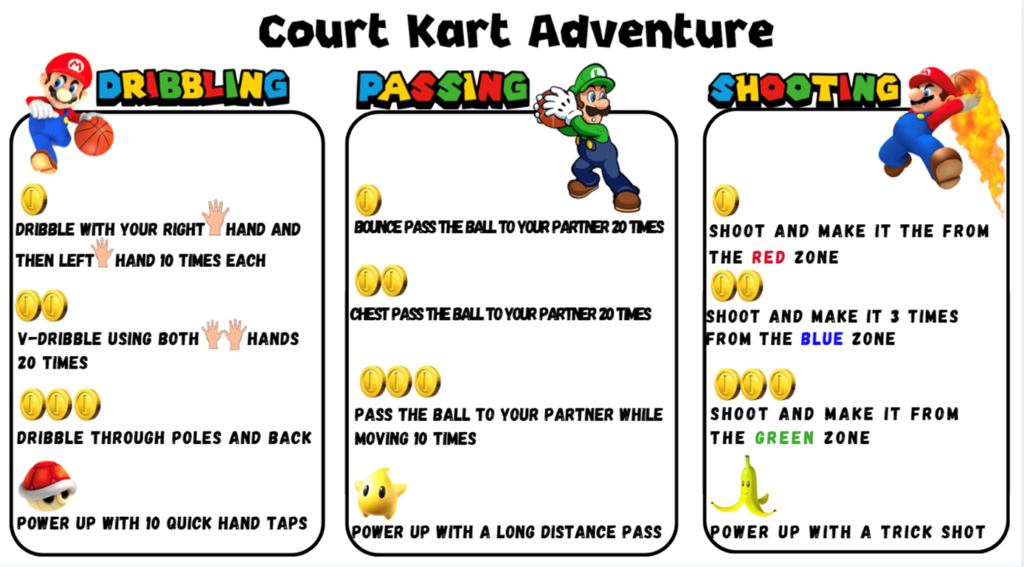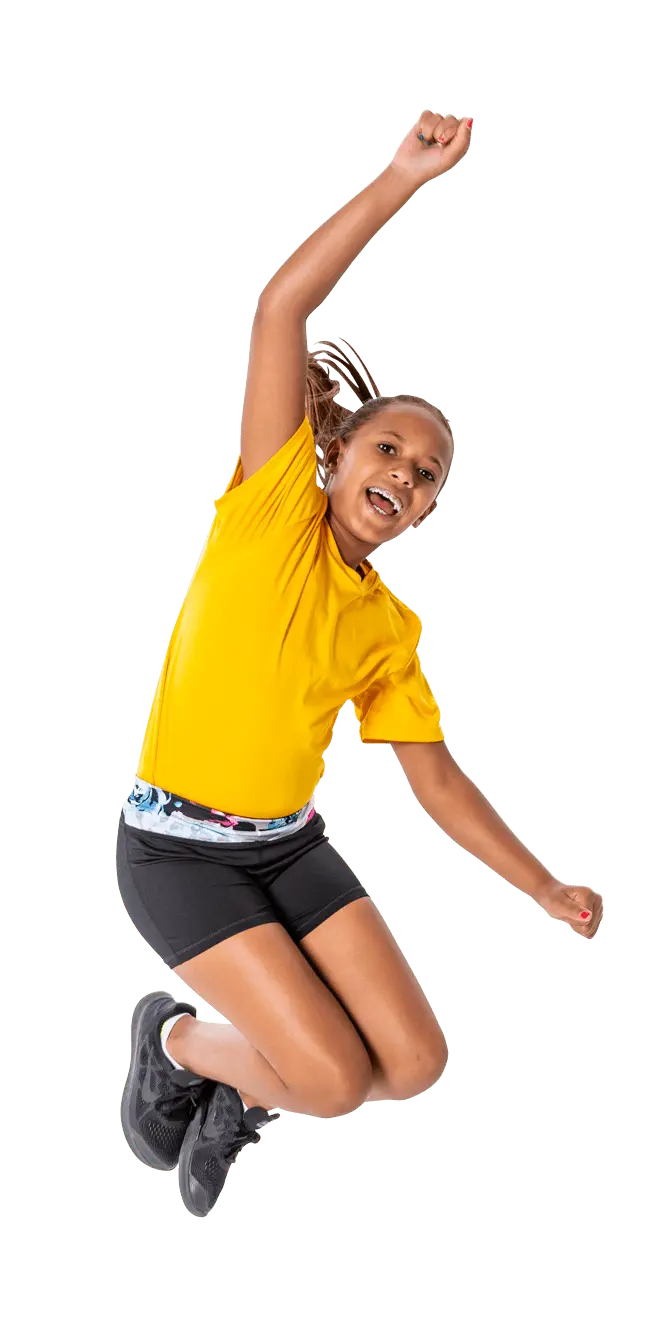In today’s fast-paced educational landscape, it is more critical than ever for physical educators to be intentional and purposeful in lesson planning. By thoughtfully integrating a variety of skills and activities, we ensure that every student—especially those who identify as “non-PE” or non-athlete—has the opportunity to achieve success, develop confidence, and ultimately discover their unique movement niche. Integrating Game-Based Learning (GBL) and gamification into our units not only makes PE more fun but also creates a truly meaningful environment that engages all learners. This approach aligns seamlessly with the Meaningful PE framework, where fun, autonomy, challenge, and relevance are essential pillars, and underscores our goal of building lifelong habits of physical activity for every student.
Why Gamification in PE?

At its core, gamification involves incorporating game elements—such as rules, challenges, rewards, and friendly competition—into non-game settings. In the realm of elementary physical education, this means transforming routine activities into engaging, interactive experiences that resonate with every student. By doing so, we tap into intrinsic motivation and create a sense of accomplishment, making each lesson not just a class, but an adventure. Moreover, gamification offers a creative avenue to disguise skills or activities that students might not naturally favor—like certain fitness exercises—by presenting them as fun, leveled challenges. This approach not only builds confidence and promotes motor development but also allows us to be innovative in the ways we practice essential physical skills. This isn’t just about adding points or prizes; it’s about rethinking how we deliver content so that every student feels successful, included, and excited about being active. When students enjoy what they’re doing, they’re more likely to push themselves, collaborate with peers, and develop a positive attitude toward fitness that lasts a lifetime.
Bringing Meaningful PE to Life
In addition to the pillars of fun, autonomy, challenge, and relevance that underpin the Meaningful PE framework, the pillar of Motor Skill Development is equally essential. Gamification and game-based learning offer an alternative platform for practicing motor skills that transcends traditional drills. This approach not only fosters extended, delightful experiences but also allows students to engage in competition at a level that is both comfortable and appropriately challenging. Fun is not simply a by-product of an engaging lesson; it is an essential ingredient for learning. When students experience joy in physical activity, they’re more likely to embrace healthy habits and engage in lifelong movement. Moreover, by providing tailored opportunities for both competition and skill-building, gamification motivates every learner to succeed, build confidence, and ultimately discover their unique movement niche.
Gamifying Scooters: An Example of Leveled Learning
Scooters are always a student favorite, no matter how they’re used. That being said, when I choose to gamify them by connecting the activity to themes that are both relatable and current in my students’ lives, the fun reaches a whole new level. I’ve integrated characters from Super Mario and Sonic into my lessons by creating movement challenges that allow students to choose their “just right challenge” and level up by earning coins (inspired by Mario Kart) or rings and Chaos Emeralds (from Sonic). This transforms a simple scooter circuit into an immersive experience that not only reinforces fundamental motor skills but also fosters a sense of autonomy and progression.

Expanding the Game-Based Learning Experience
Gamification isn’t limited to elementary PE. In a recent graduate course I taught, I introduced an online Bingo Challenge when our in-person class was cancelled due to weather. Inspired by Ben Lander’s Crazy Cards, I created a series of random tasks that students had to complete, posting evidence of each completed bingo square on a shared class Padlet. The technology added another layer of engagement, as students earned points for each task and saw their progress on a leaderboard that I plan to introduce.

The feedback was overwhelmingly positive:
- “The Bingo activity was an engaging and interactive way to approach learning. For someone who is not very familiar with all the new technology out there, I really enjoyed the Padlet—it was super easy to use and figure out. The game-based format made participation feel more independent and fun than standard ways of learning. I wasn’t just passively taking in knowledge; I was actively working through tasks in a way that felt both self-directed and structured towards different options that I enjoyed.”
- “It helped my motivation because I had a lot of choice and control over what I was doing. I could see my students being more motivated by something like this.”
In elementary PE, using leveled-up experiences is also a powerful way to encourage the practice of motor skills. For instance, I’ve implemented Paddle Ninja Task Cards—an idea inspired by Mike Graham’s Jump Rope Ninja activity—that allow students to work through a series of challenges using a specific skill, like striking or dribbling. By providing options for different implements and manipulatives, I meet each student at their current level while supporting their progression. This type of instruction not only makes the learning experience more meaningful but also allows me to observe students in action and provide individualized feedback and encouragement.
Looking Ahead: The Future of Game-Based Learning in PE
As we continue to evolve the landscape of elementary physical education, it’s clear that gamification and GBL are not just passing trends—they are powerful tools for transforming how we teach and learn. Learning should be fun. Yes, it should challenge us and we should
experience productive struggle, but these elements need not be separate from one another. Some of the most memorable moments in PE occur when students work hard to accomplish a goal, and joy naturally becomes a part of that journey. As Dr. Scott Kretchmar stated on The Meaningful Podcast Experience, “Joy is not a distraction; it’s an invitation.”
This principle is evident when familiar themes—like those from Mario Kart and Sonic—are integrated into activities. The gamification of scooters, for example, connects to the universality of racing and movement. When students choose their “just right challenge” and level up by earning coins or rings, they are not only mastering motor skills but also experiencing the excitement of a well-known video game. Similarly, simple games such as Bingo, Tic Tac Toe, or Rock Paper Scissors can be “leveled up” with technology, transforming them into dynamic experiences that boost engagement and motivation.
By creating an environment that emphasizes fun, inclusivity, personal growth, and above all, relevance and connectivity, we prepare our students not just for the gym, but for a lifetime of health and activity. As physical education teachers, we need to do better at inviting JOY into our curriculum.





